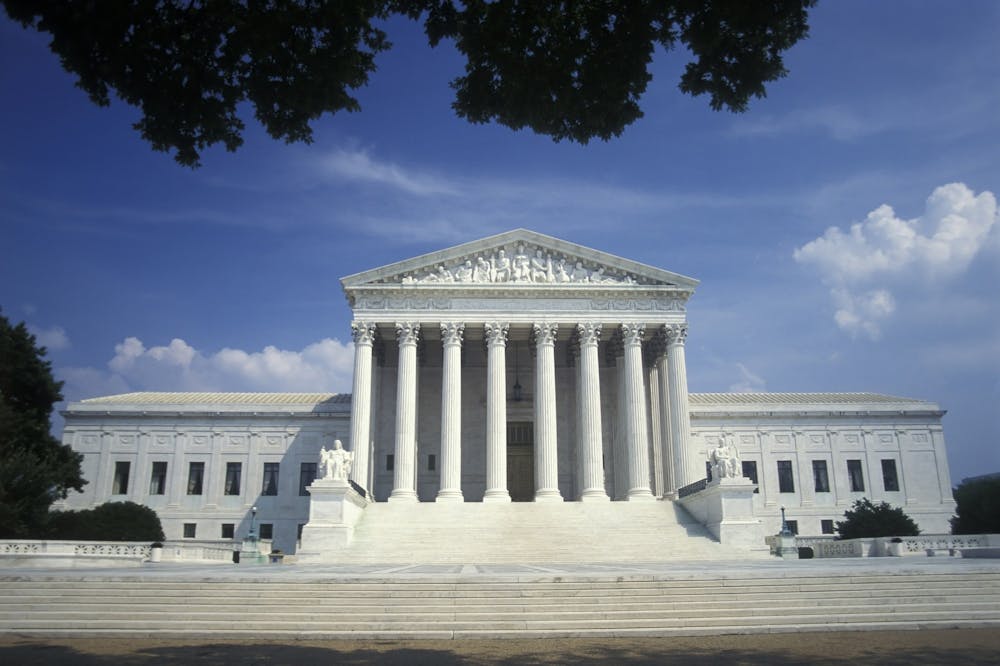And once again, she thought of her parents.
“I honestly just feel like it’s going to make my parent’s financial situation worse,” she said. “We’re not poor, but we’re not like rich or whatever. With how my dad works, it makes me kind of feel guilty having him pay for my school.”
Monserate’s family falls in a contradicting pay bracket — one where they make too much money to be considered for aid but not enough to actually cover her school costs.
She did have some scholarships at the beginning of her first year and during the pandemic, but they were nowhere near the amount she owed. On top of the loans she took out every semester, Monserate’s parents had to pay $4,000 out of pocket to the University.
“I’m on loans because I don’t qualify for those grants and stuff because I ‘make too much money,’” she said. “But then, they don’t realize my dad works 60 hours a week and my mom also works.”
Inequities in student loan debt
This circumstance isn’t something that is unique to Monserate. Braxton Brewington, a sociology doctoral student at UNC, also faced a similar situation.
He had to take out multiple student loans to get his undergraduate degree at N.C. A&T.
To offset this debt, Brewington had several jobs throughout his undergraduate years. He worked seven days a week — usually two jobs and sometimes more — and often stayed up until midnight working.
He was a server, grocer, local campaigner, side-gig hustler and student all rolled into one — a never-ending fusion of work and school.
“It’s sad because it’s ruined," he said. "The price of college has ruined some of my experience of undergrad because I wasn’t able to be engaged in the classroom as I wanted to. That’s really frustrating because it took some of my college experience away. It shouldn’t happen, it’s not fair to other people who are in the same situation.”
Even though he worked constantly and had scholarships, Brewington still finished school owing about $50,000 in student loan debt.
To get the day's news and headlines in your inbox each morning, sign up for our email newsletters.
When he graduated, Brewington started working with the Debt Collective, a national debtors’ union, and eventually became an advocate for student loan debt cancellation. He said part of his passion is also looking into how student loan debt uniquely impacts borrowers of color, particularly Black student borrowers like himself.
According to data from the Student Borrower Protection Center, 90 percent of Black students take out student loans to go to college, compared to 66 percent of their white peers.
Not only do they take out more loans, but they also hold on to the debt for longer. While the median white student borrower has paid off 95 percent of their original student debt 20 years after starting school, the median Black student borrower still owes 95 percent of their original balance.
Brewington said part of this is due to the racial wealth gap Black people face in the workforce and the historical racism that has slowed Black families’ ability to build generational wealth.
“The combination of being stripped of generational wealth — not being able to pay for college upfront or have a parent or a grandparent pay for your college — is exactly why we’re looking at a crisis that really falls along gender and racial lines,” Brewington said.
Black women, in particular, are burdened the most with student loan debt. According to data from the American Association of University Women, Black women finish college with about 20 percent more debt than white women.
And like men of color, Black women face racial inequities when they enter the workforce. Since they are women, they also face gender biases, Brewington said.
“They get so underpaid in the workplace that it becomes more difficult to pay off the debt because the income isn’t keeping up at the same pace as everyone else’s,” Brewington said. “Even if you have a Black woman and a white man, they could take out the same amount of money to go to college and statistically you just won’t be able to pay it back…at the same rate”
Will the forgiveness program return?
The question of when or even if the forgiveness program will be resumed is a tricky one. Sablosky Elengold said there are multiple directions the case could take.
As of now, the Biden administration is asking the Supreme Court to vacate or overrule the 8th Circuit’s opinion.
For the lawsuit in a federal district court in Texas, the administration has already appealed the case to the 5th Circuit Court of Appeals and is awaiting a decision.
Depending on the rulings in both lawsuits, the Biden administration could end up appealing both cases to the Supreme Court. Sablosky Elengold said this decision could take a long time since the Supreme Court only rules on cases when they are in term. Generally, the court continues sessions until the end of June or the beginning of July.
Last Tuesday, the Biden administration announced that they are extending the student loan repayment pause, which originally started in March 2020. It will pause student loan repayments until 60 days after the Supreme Court decides on the case. If there hasn’t been a decision by June 30, 2023, the student loan repayments will start back again 60 days after that date.
Regardless of what happens in the next few months, Sablosky Elengold recommends that borrowers have a plan. This includes knowing who your loan servicer is, what your loan balance is and what payment program you are in.
“My overall recommendation is don’t wait until the payments start to figure out what’s going on with your loans,” Sablosky Elengold said. “Because it is going to be chaos, and mistakes will be made by servicers.”
@batkinson2501
university@dailytarheel.com




